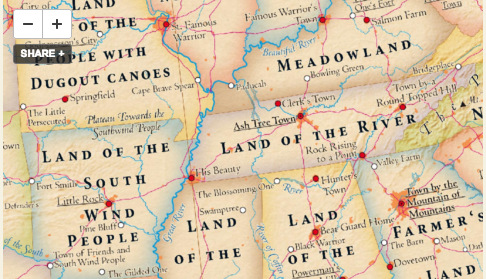In late April of 1964, England was celebrating the 400th birthday of William Shakespeare. At the same time, “Beatlemania” was in full swing. And for a brief moment, two of Britain’s cultural treasures intersected when the Beatles performed in a playful send-up of A Midsummer Night’s Dream.
The sketch was recorded in London on April 28, 1964. Only the month before, the Beatles had made their American debut on the Ed Sullivan Show. The Shakespearean spoof was part of a one-hour British TV special called “Around the Beatles.” It’s from the play-within-a-play in Act 5, Scene 1 of A Midsummer Night’s Dream, in which a group of actors make a mess of the classic Pyramus and Thisbe story from Ovid’s Metamorphoses.
Pyramus and Thisbe, a source of inspiration for Shakespeare’s Romeo and Juliet, are a pair of star-crossed lovers whose feuding parents forbid them from seeing one another. They live next-door to each other but are separated by walls. Through a crack in one wall they whisper their love and make plans to meet on a moonlit night under a mulberry tree. Thisbe arrives first, only to see a lion with blood dripping from its mouth after eating its prey. Terrified, she drops her veil and runs. Pyramus arrives soon afterward and sees both the blood and the veil. He assumes the lion has killed Thisbe, so he falls on his sword and dies. Thisbe returns and finds Pyramus dead. She takes his sword and kills herself.
In the silly Beatles sketch, Paul McCartney plays Pyramus, John Lennon plays Thisbe, Ringo Starr plays the Lion and George Harrison plays Moonshine. When Lennon was asked why he took the role of the maiden, he said, “Because if anyone likes dressing up more stupid than the rest, I enjoy it, you know. I was asked to do it because they thought I had the deeper voice.”
via BrainPickings
Related Content:
Peter Sellers Performs The Beatles “A Hard Day’s Night” in Shakespearean Mode
Pink Floyd’s David Gilmour Sings Shakespeare’s Sonnet 18
Shakespeare’s Satirical Sonnet 130, As Read By Stephen Fry
Find Shakespeare’s Collected Works in our Free eBooks and Free Audio Books Collections
Download Shakespeare Courses from our Collection of Free Online Courses



